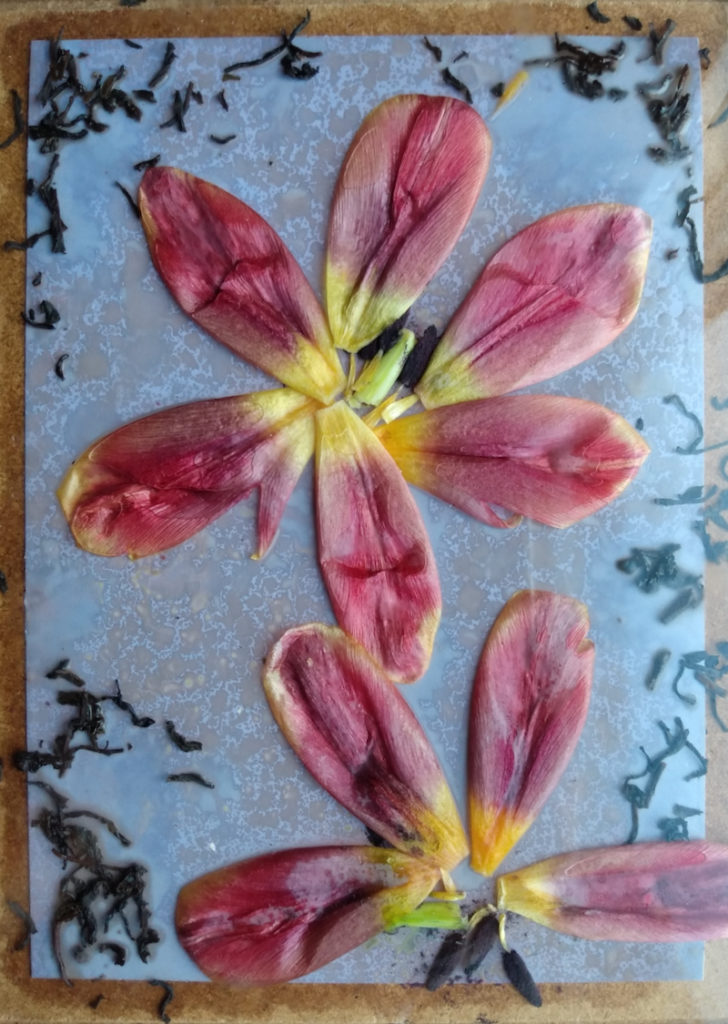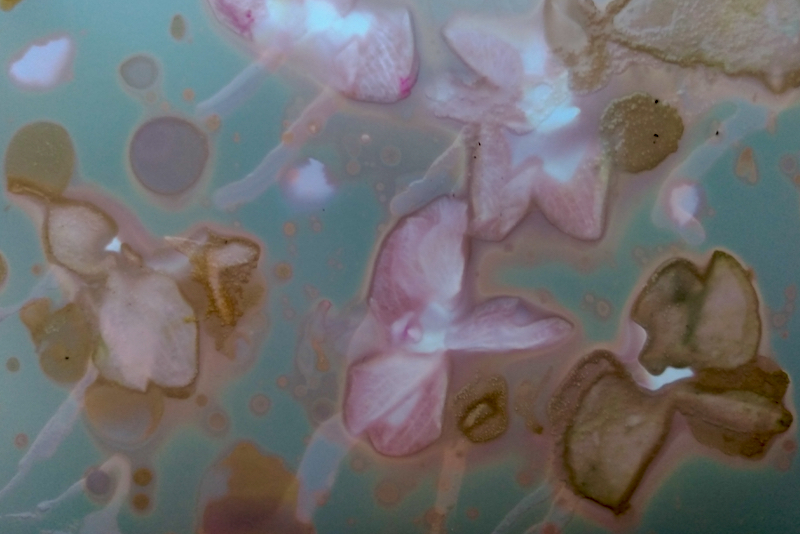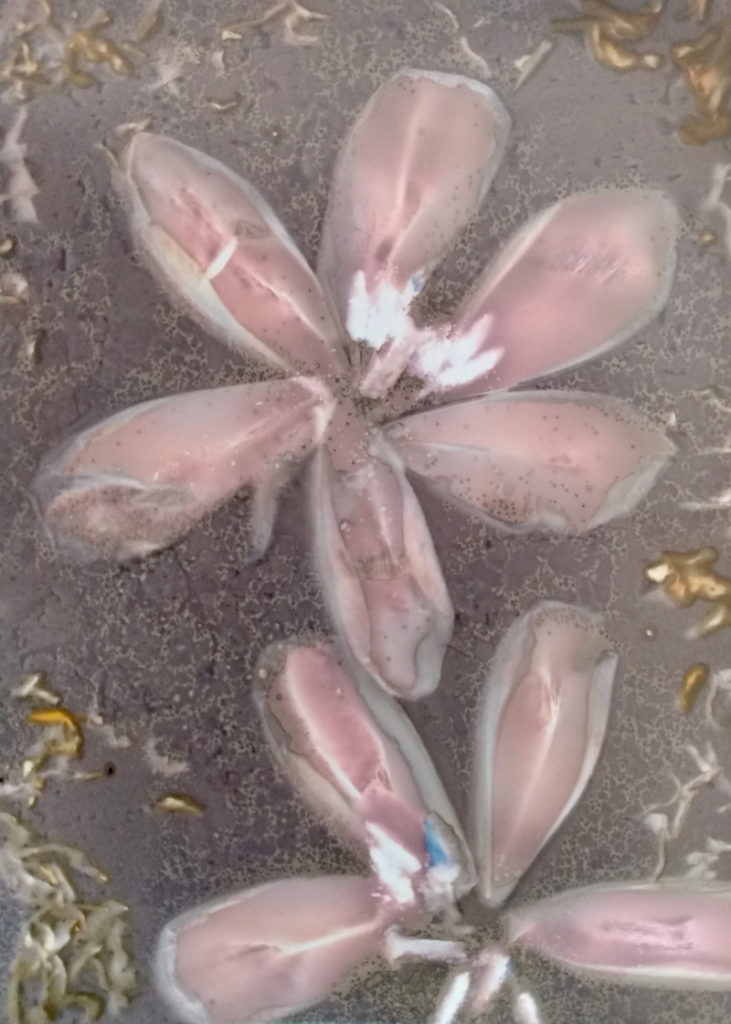We are not sure where the phrase Lockdown Lumens started but there are plenty being made at the moment given everyones confinement and nice sunny weather here in Scotland.
Lumen Basics
B&W photographic paper is exposed to UV or artificial light, masked with objects or a negative until the paper turns a pleasing colour. The print is then scanned or fixed to retain the image. No developer is used.

The Art Bit
As with photograms the composition is probably more important than the chemistry! Inventive uses for household objects can take these beyond the everyday and into the narrative or abstract. Saying that, plant matter produces delicate and beautiful results and negatives of all sizes work well too.

The Science Bit
How do you get colour from black and white paper?
As more intense light is allowed to fall on the paper, over a prolonged exposure period, coloured areas form. This is caused by silver atoms clumping on the silver halide particles and reflecting different wavelengths. As more free silver is liberated by the light energy reaction the ‘print out’ on the paper becomes coloured. First appearing yellow, pink, then sepia, then red-brown and finally as a purple slate gray shade as the clump particle size increases.
What factors Affect how the lumen will appear?
- Density of objects placed on the paper -how much light reaches the paper surface. Objects in contact with the paper will be crisper so use a sheet of glass to hold everything in place. (Check the glass does not have a UV coating!)
- Intensity of light – bright sunlight, overcast, LEDs, fluorescent light will all give different effects.
- Colour of light – black and white paper is designed to be used in darkroom conditions so red light has little effect on it.
- Time of exposure – a long exposure usually leads to more darker prints. Lumens can be left for seconds to days!
- Humidity – damper usually means faster reaction time (Refer to John Beaver!)
- Temperature – warmer will usually result in darker more colourful images.
- Paper type – Ilford warmtone will give a different colour range to Kodak bromide or Fomaspeed Variant. Old out of date or fogged papers are perfect for producing lumens.
- PH- acids make the print pinker, alkalis make the print more grey or brown.

How do you preserve the lumen?
The lumen will be fugitive after exposure. Many people scan the lumen to preserve the fresh colours. The lumen can be fixed using an alkaline fixer (such as 10g sodium thiosulphate / 1g sodium carbonate/ 100ml distilled water) but this will cause some bleaching of the colours.
At a previous LoFi meet we discussed “Loomens” – that is using a very long water wash to remove as much of the reactive chemicals as possible. The only dark tank with changing water we could think of was the toilet cistern – pop the print in the back, out of the way of the flush mechanism, and leave it for a month!

What next?
Try Anthrotypes if you enjoy the UV aspect and make your own photosensitive materials. Liquid light can allow for lumens on all sorts of surfaces. Try coating the B&W paper with cyanotype fluid first to make cyanolumens!
Trying this out?
Email in your results or tag us on social media for repost – we would love to see the results.
Check out work by Olive Dean and Mandy Kerr – they have lots of example works available through the links in their galleries.

